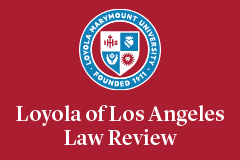Abstract
In May 1852, Charles Perkins decided he wanted his slaves back. Born in Mississippi, Charles emigrated to California in 1849 during the height of the Gold Rush. When he came, like hundreds of others from Southern states, he also brought three enslaved men with him. Following California’s admission to the Union as a free state, however, Charles purportedly freed the men and then returned home, alone. Then, a year later, Charles had a change of heart. Following the enactment of the California Fugitive Slave Act in 1852—which declared that slaves brought to California before it became a state were still slaves—Charles brought suit in a California court to reclaim what he considered to be his property. The resulting litigation animated the state and the country, as the parties debated the Act’s constitutionality and the larger issue of whether slavery could exist on free soil. The answer, provided five years before Dred Scott, firmly planted the West in the middle of the national debate over race, slavery, and the law.
This Article is a narrative history of In re Perkins, the case involving Charles Perkins and the three men he maintained were his slaves. It takes place during the Gold Rush and the immediate years that followed, and it has two primary goals. First, by centering a story about slavery in the Far West, it provides a critical lens through which we can explore how the ideological conflicts animating the North-South axis also extended horizontally to the Pacific Ocean, thereby bringing the West into the national discourse over slavery and the growing sectional crisis. Second, as a narrative history, this Article affords an opportunity to dig deep into the main participants in the case and reconsider who we think are the makers and interpreters of the law. Drawing on local court records and personal papers, this Article is part of a larger story of how people of color and their allies shaped and reshaped the law in far more ways than previously imagined.
Recommended Citation
Jason A. Gillmer,
Litigating Slavery’s Reach: A Story of Race, Rights, and the Law During the California Gold Rush,
56 Loy. L.A. L. Rev. 499
(2023).
Available at: https://digitalcommons.lmu.edu/llr/vol56/iss2/3


